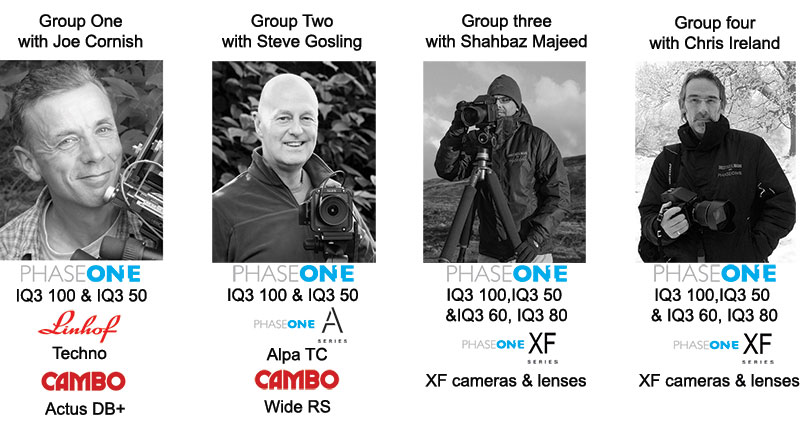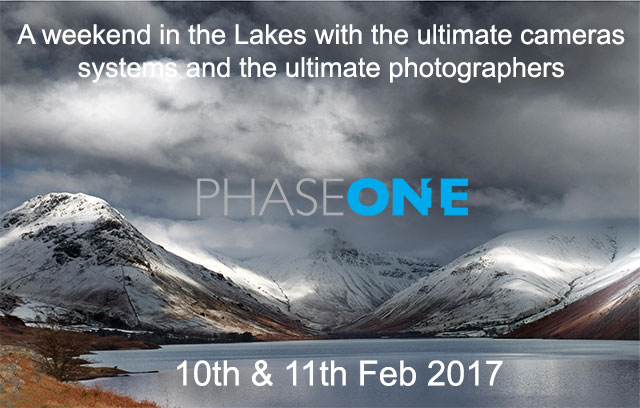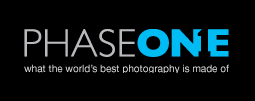THE A-SERIES IQ3 50
In November 2014 Phase One launched their A-series camera. Basically this is an Alpa TC coupled with an IQ back. Each individual camera and back come set up to ensure the highest possible quality output from each unique combination. Each digital back also has built in factory set lens calibrations for three Rodenstock lenses - the Alpagon f5.6 23mm, the Alpar f4 35mm and Alpagon f5.6 70mm. It's effectively bespoke camera manufacture taken to the nth degree.
The A-series comes supplied with camera, lens (or lenses depending on configuration), an IQ back and an extensive array of accessories e.g. batteries for the back, charger, card & card reader, leather straps, cable release, lens cloths etc. In true Phase One fashion the attention to detail in what is included and the packing of everything in a solid Pelicase leaves nothing to be desired.

MY REVIEW
In 2015 I was asked by Phase One, as an existing Phase One/Alpa user (Alpa TC plus P45+ back), to try out the A-series and to give my unbiased view on how it performed in use. I was able to use the camera over a few months in both the UK and the USA and I can say upfront I was so impressed that earlier this year I bought myself an A-series with an IQ350 back and the 35mm & 70mm lenses from my Phase One dealer Chris Ireland at Direct Digital Imaging.
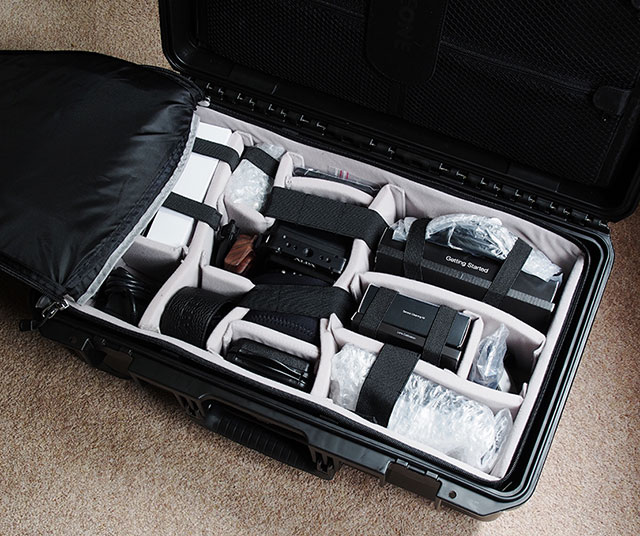
On picking up the camera for the first time I immediately noticed a few significant differences compared to my own Alpa TC camera: -
- The lenses come equipped with the Alpa High Precision Focussing Ring.
This gives engraved detailed distance measurements up to infinity and makes precise focussing very easy;
- A rosewood handgrip fitted with a comfortable leather strap making
handholding of the camera a real possibility;
- The Alpa synch cable which takes away the need for the two stage
'wake up' process I normally have to employ;
- A smartphone holder to attach a device to the top of the camera
(this is used in conjunction with Capture Pilot, synced with Live View on the IQ back,
so the image can be previewed with accuracy ).
And venturing out to take some photos revealed a very significant difference in operation - the ease of use due to the IQ back's functionality (e.g. intuitive menu system, touchscreen capabilities) and the effective live view offered by the CMOS chip. As much as I enjoyed the process of setting up my previous system there were times (in rapidly changing light & weather conditions for example) when I needed to work extremely quickly and my Alpa TC/P45+ combination was not ideal for this. In contrast, using the A-series I am able to get the camera from my backpack, onto the tripod and ready to shoot in a fraction of the time. In fact, not much slower than using my Olympus cameras.

Most significant in achieving this is the live view capability. Switching live view on means I can compose the shot with precision and as quickly as using a DSLR. This is so much faster than the iterative process I previously had to employ i.e. use my iPhone & Alpa app to get the basic composition, take a shot, review it, move the camera to refine the composition, take another shot etc etc. I am also able to use live view to zoom in on the image to check focusing and depth of field (although I find the supplied Alpa High Precision Focussing Ring to be so accurate that I can rely on this and just double check for accuracy when reviewing the image in playback mode).
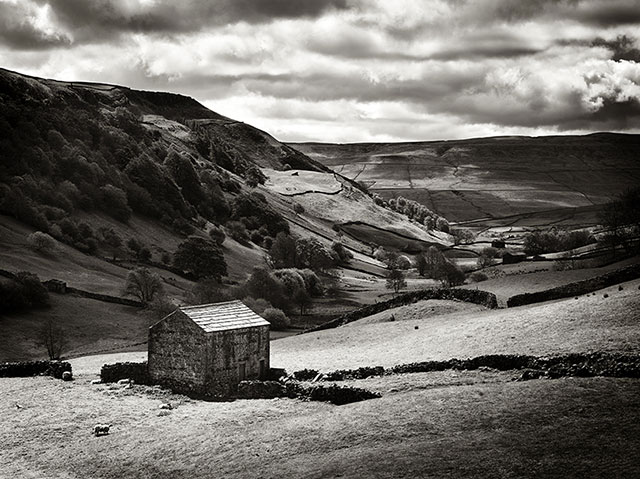
In general the whole picture making process is enhanced by the impressive quality of the 3.2" retina touchscreen (which also has the capability to zoom in to 100% with a simple tap on the screen). Speed of operation has also improved by a relatively small (but also expensive) accessory - the Alpa synch cable; no more missed shots because I've forgotten to wake up the digital back!
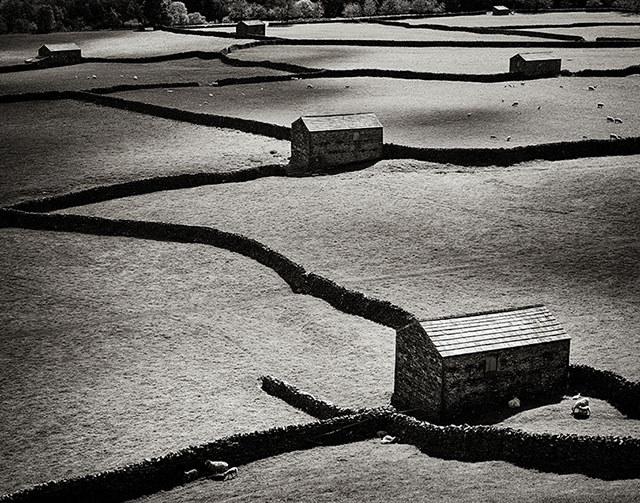
One of the key criteria for me when choosing a camera is how well it performs at long exposures. Long exposure images appeal to me because they can capture the dynamic nature of the landscape - static elements (like trees, buildings, fence posts, rocks for example) can be contrasted against moving features like water or windblown clouds & foliage during an exposure of several seconds or minutes. Used appropriately the technique can create ethereal, moody images that transform a relatively mundane seen into an evocative photograph.

I'm pleased to say that the IQ 350 back is capable of doing a one hour exposure (I think the longest I've shot digitally is around 10 minutes) and it performs admirably. Noise has never been an issue and the full tonal range of the scene is captured on the sensor. It's a great tool for the long exposure enthusiast.Overall, image quality has exceeded my expectations. I was very used to the incredible standard of photographs that my Alpa and Phase One back could produce. With the precision matching of lens, camera and back of the A-series this leads to an extremely detailed image out of the camera with a quality that even the untrained eye can spot when the image is enlarged to 100% on the computer screen. And one noticeable improvement over my P45+ back is the high ISO performance of the IQ back. I haven't pushed it to its limit but I'm assured by Phase One that image quality up to ISO6400 is on a par with the best any DSLR can offer.

I don't think anyone interested in producing the highest quality files will be disappointed with the Phase One A-series. Every single aspect of the camera is engineered to the nth degree with image quality in mind. Not speed or convenience. Not price or versatility. Image quality and only image quality.
www.stevegoslingphotography.co.uk/
Be one of a small group of Photographers to be on a Phase One weekend workshop in the Lakes 10th & 11th Feb 2017 with Steve Gosling, Joe Cornish, Shahbaz Majeed and Chris Ireland. Using the A-System IQ3 50 & IQ3 100 and many other Phase One Systems the XF and other Technical cameras.
To see more information on this amassing weekend event
To book on the event contact Chris Ireland
or
Tel: 0113 2370563 Mobile: 07950 368554
